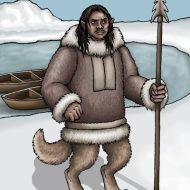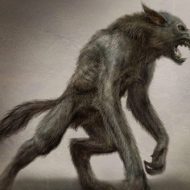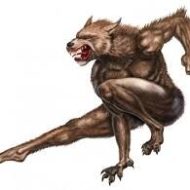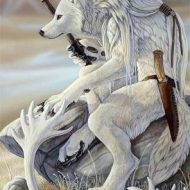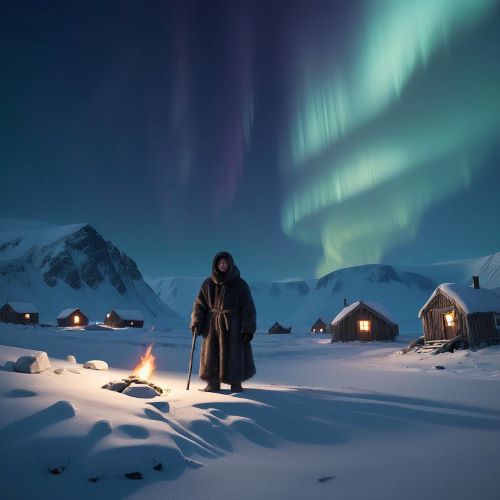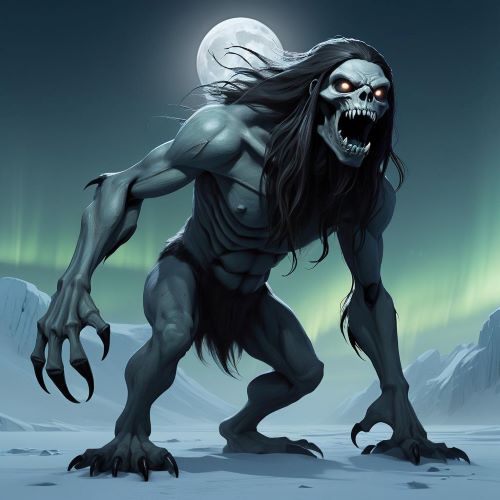Adlet : The Inuit Werewolf
Listen
At a glance
| Description | |
|---|---|
| Origin | Inuit Mythology |
| Classification | Hybrids |
| Family Members | Niviarsiang (Mother), Ijirqang (Father) |
| Region | Greenland, Hudson Bay |
| Associated With | Werewolves |
Adlet
Introduction
The Adlet are a type of wolf-like creature that’s based on Inuit mythology. It’s believed that a woman and a giant dog were responsible for the birth of the Adlet and their progeny going forward. According to the myth, a woman gave birth to ten children: five were dogs, and five were Adlet. Five of them managed to cross the Arctic and the Atlantic. The other five, which stayed with their mother, became ferocious canine hominids.
Physical Traits
The Adlet are said to be half wolf and half man which is a striking difference from the well known werewolf. While the Adlet are born with the lower half of a wolf and the upper body of a man, the werewolf is said to transform from a man to a wolf on full moon nights.
Family
Niviarsiang was the daughter of Savirqong. She refuses to marry anyone and becomes to be known as Uinigumissuitung or she who wouldn’t take a husband. Instead, she gets married to a dog named Ijirqang with white and red spots.
Since Ijirqang doesn’t go hunting, Savirqong must provide for the household. Savirqong decides to move the family to a small island to some respite from the noisy household instructing the father to come and get meat daily. Niviarsiang hangs a pair of boots around Ijirqang’s neck and he swims ashore, but Savirqong, instead of giving him meat, puts stones in the boots and Ijirqang drowns.
Niviarsiang is angered by her father’s behavior and instructs her children to attack her father. Savirqong in return pushes her off the boat and chops off her fingers which turn into whales and seals when it falls into the ocean.
Since Niviarsiang is afraid of her father killing the Adlet, she sends them inland and they then become the Europeans’ ancestors.
Other Names
A proposed etymology shows that adlet could come from the word ad, which would mean “those below”. Or it could come from the stem agdlak, which would mean “the striped ones”, referring to other Native Americans. Atlat could also mean “others”.
Powers and Abilities
The Adlet are a race of creatures native to Greenland and the Hudson Bay. They are known to run quickly and are often known to get into conflict with man. In Inuit lore, although they are depicted as being taller than humans and cannibals, they eventually end up losing most of the battles or conflict with man.
Related Images
Frequently Asked Questions
What does the Adlet look like?
The Adlet, a creature from Inuit mythology, is a man-dog hybrid with a fiery red or brown fur-covered human-like upper body, a long snout, pointed ears, and piercing yellow eyes. Its lower body boasts powerful canine legs, a long tail, and claws. Standing up to eight feet tall, the Adlet is strong, agile, and boasts superior senses. While often portrayed as aggressive and dangerous, some stories depict them as protectors or guardians.
What is the native mythology of Greenland?
Greenland’s native mythology, deeply rooted in animism and respect for nature, features a captivating spirit world populated with mythical creatures like the vengeful Qivittoq and the powerful Adlet. These stories served to explain natural phenomena, teach moral lessons, and provide entertainment, fostering a strong cultural identity. While the world has evolved, Greenlandic mythology remains relevant, offering valuable insights into the Inuit worldview and reminding us of the interconnectedness of humanity and nature.
What is the adlet in the Inuit myth?
In Inuit mythology, the adlet (also known as Erqigdlet) is a race of half-man, half-dog creatures. They are described as having human-like upper bodies with thick fur and dog-like legs.
What is the meaning of adlet?
In Inuit mythology, it refers to a race of half-man, half-dog creatures with thick fur and powerful canine legs. They are often portrayed as aggressive and dangerous, but some versions depict them as protectors or guardians.
What religion is Greenland?
The majority of Greenland’s population (approximately 95.5%) is Christian, primarily belonging to the Church of Denmark, which is Protestant in classification and Lutheran in orientation.

